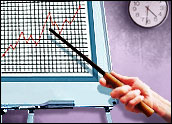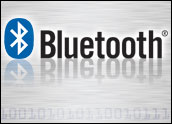
The U.S. technology economy continues to rebound from the recession of 2001-2003, according to a new Forrester/ITAA U.S. Tech Sector Index.
The new “quarterly benchmark” is the most comprehensive measure of the tech economy available and is based on 11 measures of IT demand, supply, and the strength of U.S.-based IT providers.
Creating a Baseline
“Until now, no one has been able to definitively answer the question, ‘how is the tech industry doing?'” said Harris N. Miller, president of ITAA, the Information Technology Industry Association, in an e-mail to TechNewsWorld. “Although IT is one of the major drivers of the U.S., economy, no single comprehensive measure of the health of the sector existed in the same way that the U.S. Consumer Confidence report tracks consumer spending.”
To provide vendors, customers, economists, and end users with a barometer of the IT industry, ITAA is partnering with Forrester Research. The result is a graphical index and brief that presents an industry that’s economically healthy, based on a variety of factors. “The Forrester/ITAA Index indicates a stable industry that should be attractive to IT customers and career planners alike,” said Miller.
According to George F. Colony, chairman and CEO of Forrester Research, the Index reveals a continuing saw-toothed pattern, “which further supports Forrester’s findings that the tech economy is not yet in a period of strong steady growth. In the near term, the new data points to both moderate increases and declines over the coming year. Don’t weep for the U.S. tech sector, but don’t break out the champagne either. Save it for 2008.”
Defining Trends
While the third quarter 2005 provides the data for the first published Index, Forrester compiled historical data to provide a baseline and reveal trends occurring after the low point of the recession in 2002. All 11 indices are weighed evenly in the overall index score, using a 2002 quarterly average of 100 points as the baseline.
During the third quarter, the Index rose 3.9 points above the second quarter to 121.6, which nearly matches a three-year high of 122.3 in Q4 2004.
Healthy gains in chief information officer confidence about the health of their budgets and future spending prospects largely bolstered the overall index. Increases in both U.S. tech vendor revenues and the Dow Jones U.S. Technology Sector Index Fund, which broadly measures the stock price performance of the US tech sector, also contributed.
Highlights of the indices’ performance are as follows:
- Demand indices rise with growing CIO confidence;
- Demand forces including CIO spending outlooks, U.S. technology exports and U.S. revenues of 39 large IT vendors, recorded the biggest growth — 8.5 points — and were a primary driver of the third quarter’s increase in the overall Index.
Forrester’s outlook for business investment in IT was the only measure in the Index to fall, due to expectations that IT spending in Q4 will be less than what was reported in Q3.
What’s more, supply indices, including the health of venture capital (VC) funding, IT employment and U.S. technology exports, dropped 0.6 points. Nonetheless, the group’s decline this quarter was much smaller than those in recent memory, which may point to an overall strengthening in new technology funding.
Other findings include the following:
- IT industry employment continued to rise, reaching its highest level since the first quarter of 2003 with the addition of 15,500 new jobs;
- Though VC investment was down, similar drops have occurred in each third quarter of the last three years;
- The supply index has hovered around 100 since late 2003, indicating that demand for IT goods and services in the U.S. is stronger than supply. Technology imports and offshore services make up much of the gap.
Profits, Revenues
These indices measure the overall strength of U.S. IT companies based on the profits and global revenues of the 22 large U.S.-based vendors, IT prices and stock prices. Although they rose 2.6 points together, the individual numbers were mixed in the third quarter.
While these numbers are generally strong, Forrester expects the Index to fluctuate in 2006, bringing a mild downturn in 2007.




















































